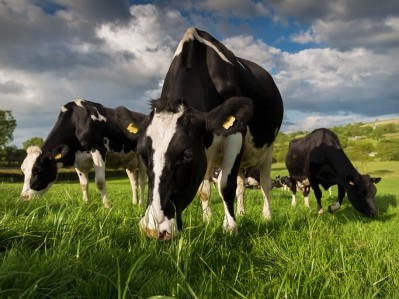Special Edition: Ruminant Nutrition
Tracking dairy cow health in Northern Ireland

The UK’s Premier Nutrition designed the online measuring tool, the Transition Management Systems (TMS), and McLarnon Feeds has been trialing it on half a dozen farms in Northern Ireland for the past three years.
Some 50% of dairy calf metabolic disorders occur in the first three weeks after calving. The TMS measures parameters that affect cow health and performance during the transition period, including body condition score and lameness, said Dr Ronald Annett, ruminant technical manager, McLarnon Feeds.
It allows farmers to measure the energy and health status of their cows, he said
“The TMS uses a simple traffic light system to alert farmers to management or nutrition issues.
“We find it a useful tool. We want to launch it on a wider basis. We recently extended the service to include 12 farms, covering 2,000 cows, but our short term goal is to broaden it out, so the service covers 5,000 cows.”
The idea is, based on the scores and the monthly reports generated through the TMS, a cow remains healthy during the transition period, either through better nutrition or through a small change in management, explained Annett.
“The primary data is interpreted by the nutritionist, but the TMS is quantifiable, it generates a score each month, and the scores over a period of months can be compared to show a trend, allowing you to drill down into the potential causes of problems,” said Annett.
Milk fever, ketosis control
Any incidence of problems such as milk fever or displaced abomasum are recorded, along with fat and protein levels, to assess for ketosis, while cell counts before dry-off and after calving are logged.
Peri-parturient diseases such as milk fever, ketosis, and displaced abomasum can all be associated with poor transition. The immense negative consequences on the metabolism of the early lactation cow due to failure of the transition period are great, noted an Irish report.
“Farmers benefit from smoother transition and more milk. The new tool does not really replace anything but viewing the data as a whole creates an accurate assessment and helps with identifying problems and determining the correct solutions.
“A common problem we identified on the trial farms was cows being dried off over conditioned, which brings with it a high risk of ketosis. In such cases, the TMS data prompted us to look at, for example, the level of supplementary feeding given to cows at six to eight weeks before drying off, to see if that was a contributing factor,” said Annett.
In terms of a high level of milk fever incidence in a herd, the TMS helps with monitoring calcium status of the herd, prompting the nutritionist, perhaps, to subsequently change the dietary cation-anion balance, he added.
The TMS is currently being used with 40,000 cows in the UK mainland, said the ruminant expert.














